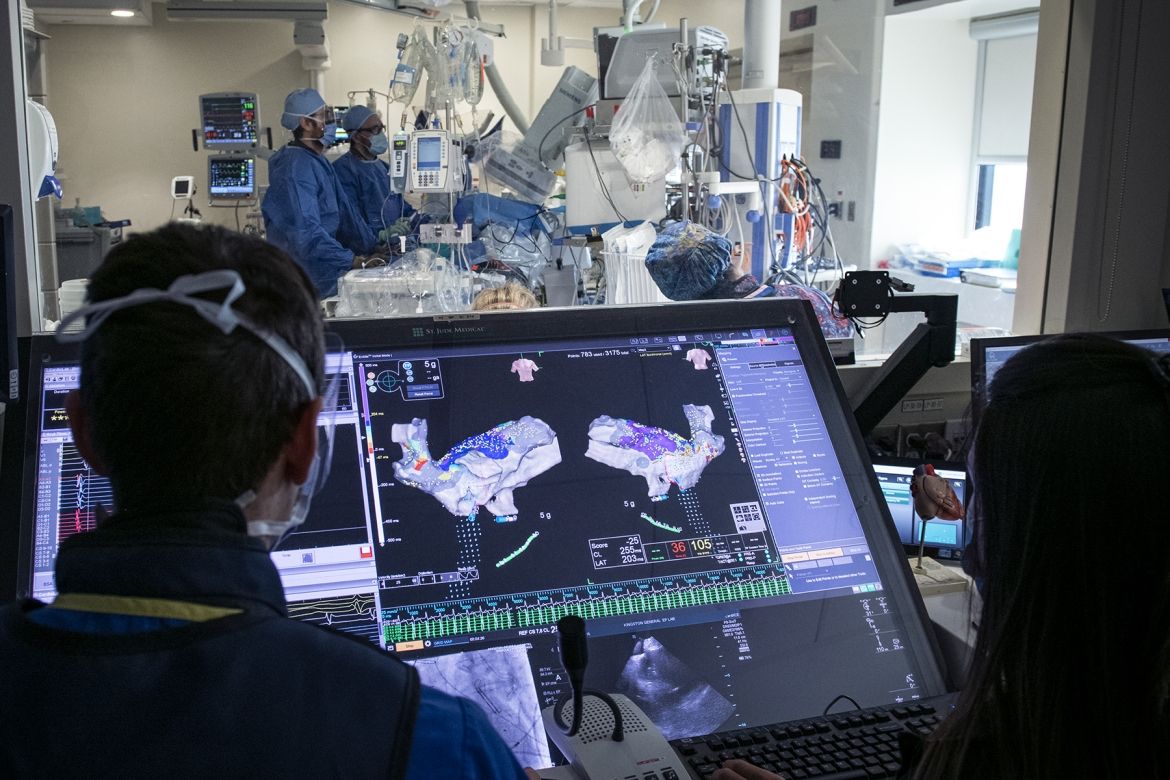Effective immediately masking is required for everyone when present on all inpatient units, in the Emergency Department (ED), the Urgent Care Centre (UCC), and the Children’s Outpatient Centre (COPC).
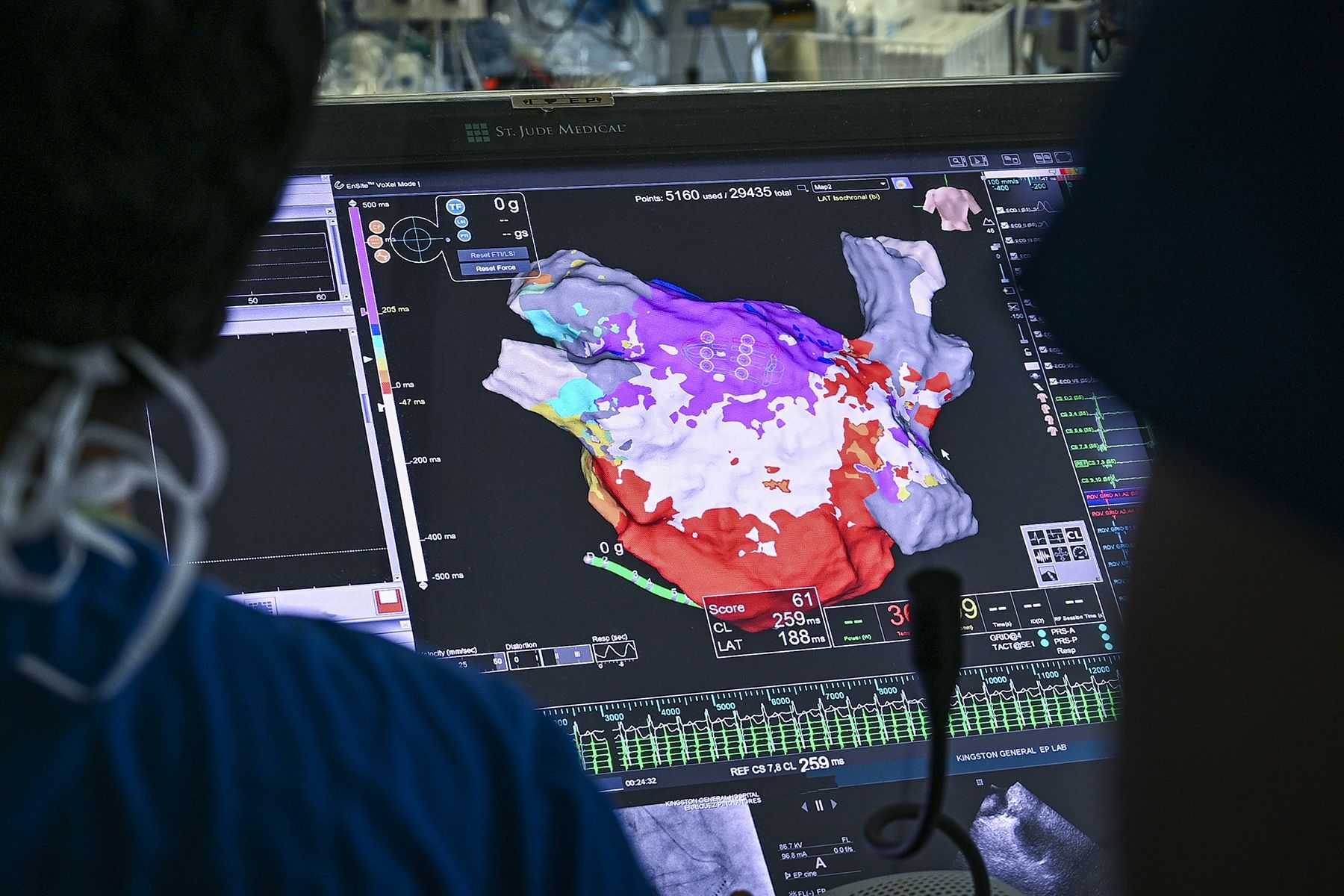
The maps Kingston Health Science Centre’s (KHSC) cardiologists make of patients’ hearts in order to find and treat faulty heart tissue, causing abnormal heart rhythms, are being made with more accuracy and speed using new and improved heart mapping technology.
“We are happy to be the first site in Canada to incorporate Abbott's new EnSite™ X EP System that allows us to more clearly understand what is going on in the heart and determine the best location to deploy therapy safely and effectively,” says Dr. Damian Redfearn, cardiologist and the arrhythmia clinical lead at KHSC.
By acquiring this new technology from Abbott, KHSC has once again vaulted itself to the front of the pack as a Canadian leader in cardiac care. KHSC has been at the forefront of heart mapping since 2017, when it was the first site in North America to use an advanced mapping suite of technologies for cardiac ablation surgery, a procedure that uses heat or freezing to destroy the tissue that is initiating the electrical signal causing the heart rhythm problem, also known as arrhythmia.
When the electrical signals that coordinate the heart’s beats don’t work properly, causing heart arrhythmias, some irregular rhythms can be associated with serious, life-threatening complications such as strokes and heart failure.
“Now, with an instant, high-detailed view of every single heartbeat, we are, in a matter of seconds instead of several minutes, able to more accurately find the source of the arrhythmia and treat it with ablation,” says Dr. Redfearn. “This is especially good news for patients with complex heart arrhythmias that are difficult to locate.”
Traditional mapping systems are time-consuming, involving cumulative images and measurements of electrical signal speed and direction taken over a period of time and from multiple locations that then need to be pieced together, deciphered and verified.
The new system, which includes Abbott's EnSite Omnipolar Technology, generates three-dimensional maps in real-time and can map 1 million points in the heart. It enhances Abbott’s Advisor™ HD Grid Catheter to provide electrical recordings in 360 degrees regardless of how the catheter, a long flexible tool, is oriented within the heart. The innovative system provides timelier, more precise location of treatment areas.
“It’s exciting to be able to better plan treatment strategies because now, very quickly, we will have a better understanding of how an individual patient’s arrhythmia is structured,” says Dr. Redfearn.
Gallery
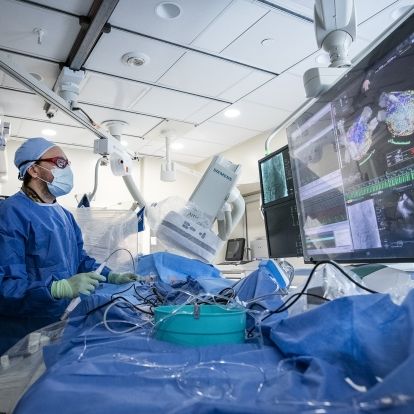
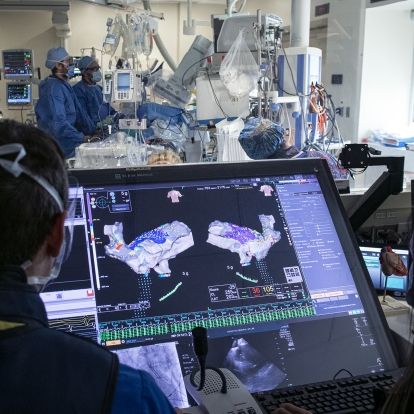
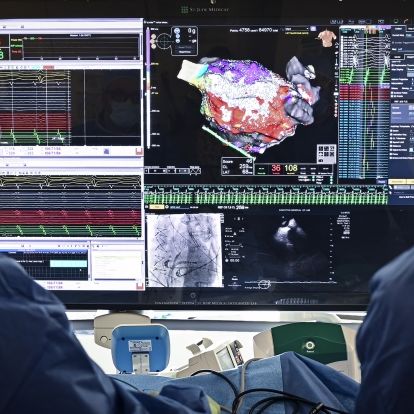
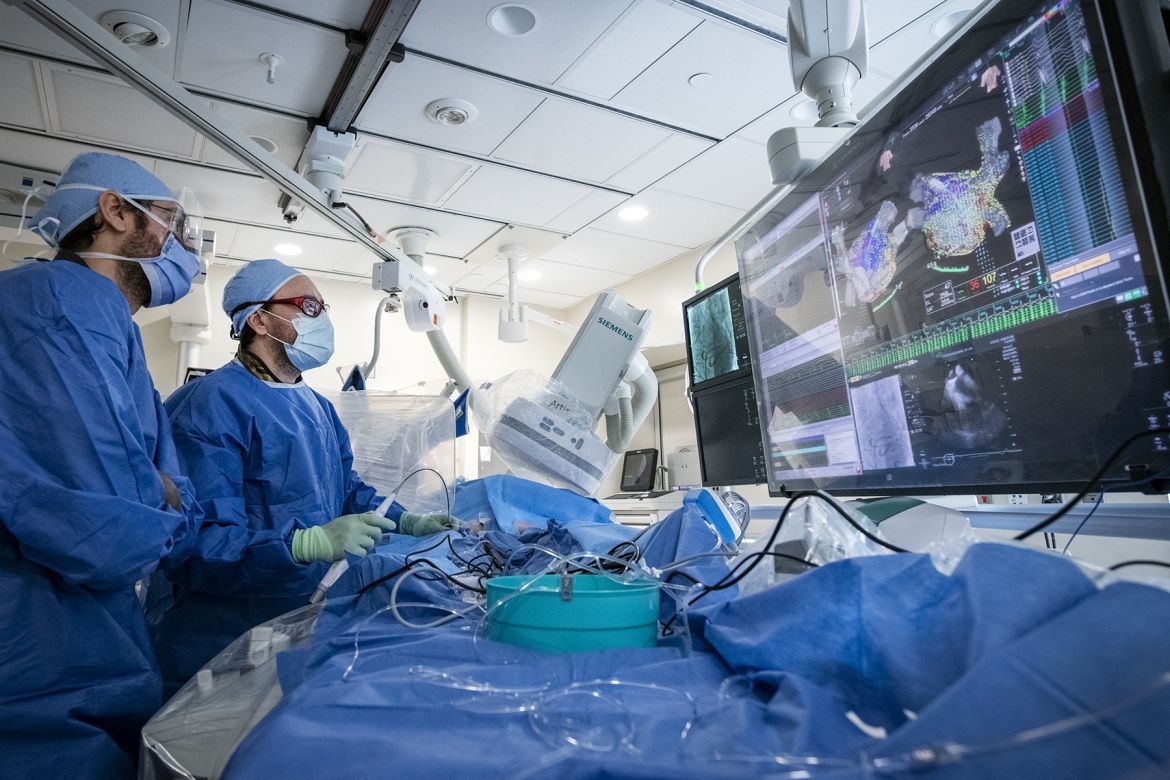
The KHSC cardiac team, including (right) Dr. Andres Enriquez, a cardiac electrophysiologist, was the first to use the new mapping system earlier this year to treat atrial fibrillation, the most common arrhythmia.
